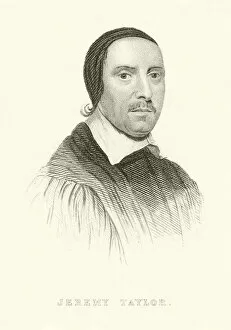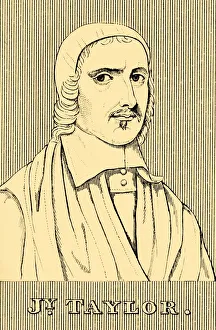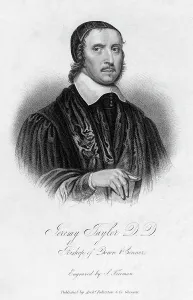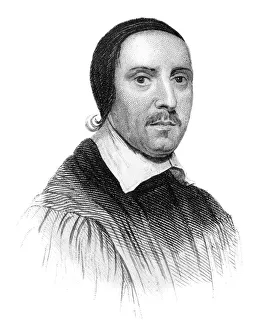Jeremy Taylor Collection
Jeremy Taylor, a renowned 17th-century English Anglican clergyman
All Professionally Made to Order for Quick Shipping
Jeremy Taylor, a renowned 17th-century English Anglican clergyman, is immortalized in various engravings and portraits that capture his intellectual prowess and spiritual influence. In the black-and-white photo titled "Jeremy Taylor, The Great Exemplar, " we catch a glimpse of this remarkable figure who left an indelible mark on religious literature. The engraving portrays him with utmost dignity, his countenance reflecting wisdom beyond his years. Another engraving showcases Jeremy Taylor amidst other literary giants like Samuel Butler, John Bunyan, John Milton, and John Dryden. This depiction highlights his esteemed position among these luminaries as a profound thinker and writer. In the portrait from 1830 by an unknown artist, we see Jeremy Taylor's visage frozen in time—a face that exudes both gentleness and strength. His eyes seem to hold secrets of divine knowledge accumulated through years of dedicated service to God. The Gallery of Portraits published in 1833 presents yet another portrayal of Jeremy Taylor—an image that captures the essence of his character. With every brushstroke or etching line meticulously crafted by artists such as Samuel Freeman or W Holl in the 19th century renditions, they sought to convey not just physical features but also the depth of his spirituality. One intriguing artifact is a letter written by Jeremy Taylor himself to Lord Hatton on November 23rd, 1661. Its artistic rendering offers us insight into both the man's eloquence with words and his personal correspondence style. Throughout these depictions spanning different eras—whether it be c1850 or even earlier in 1653—we witness how Jeremy Taylor continues to captivate hearts centuries after he walked this earth. His legacy endures through these images as testaments to a life devoted to faith and scholarship—a true exemplar for generations past and present alike.











